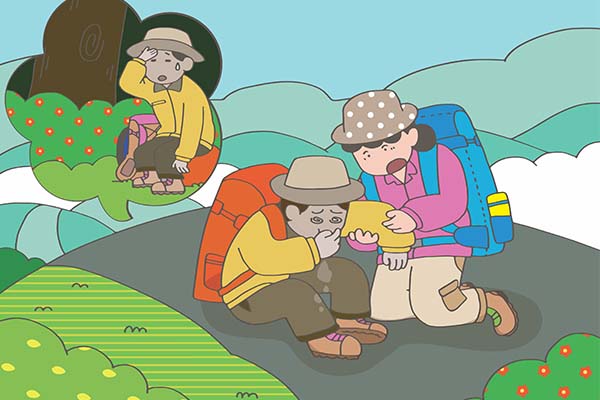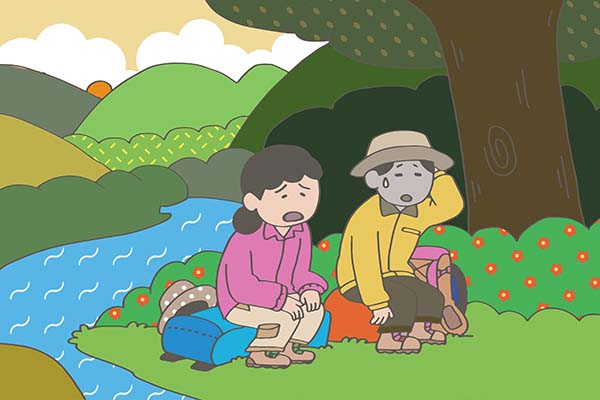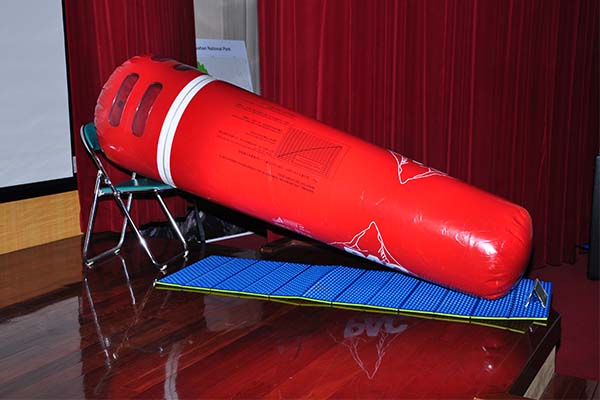Alpine Physiology
The external environmental factors change with the increase in elevation. There are:
Changes in environmental factors will cause the human body system to experience physiological changes in low oxygen and low pressure, such as blood oxygen saturation lower than that at flat plains.
The body cavity and chamber and digestive tract may experience flatulence and headaches from gas expansion. These are normal responses to being on high mountains. Most people can continue their mountaineering activities after good adjustments. If they are negligent and do not take appropriate measures, the symptoms may develop into acute mountain sickness and other problems, causing mountaineering safety issues.
Reactions on high mountains
Mountain climbing can be good for promoting physical and mental health and strengthening the heart, lung and blood functions to improve personal strength and endurance, so it is a recreational activity worth promoting. However, according to foreign research reports, high altitude pulmonary edema can occur at 2,440 meters, and cerebral edema can develop at an elevation higher than 2,750 meters. Acute mountain sickness is a common condition at an elevation higher than 3,000 meters.
According to the investigation and research conducted by Dr. Wei-Fong Kao, more than half of the patients during the snow season in Mount Hehuan have symptoms of mountain sickness, and more than 25% of climbers who climb Yushan have gotten acute mountain sickness. Many tourists have experienced symptoms of mountain sickness in Taiwan's alpine areas, and some have even developed into more severe or even life-threatening conditions.
According to studies, many mountain climbing accidents are related to mountain sickness. Due to alpine cerebral edema, you may experience instability in your walk and fall off cliffs. The physical weakness caused by acute mountain sickness or high altitude pulmonary edema may make you move slower, making it difficult to reach the campground before experiencing hypothermia. In the past, people were not too aware of mountain sickness in Taiwan and had often ignored it or mistaken it for other symptoms such as cold or pneumonia, further delaying the opportunity for treatment. Only a full understanding of mountain sickness can lead to prevention to ensure mountaineering safety. We introduce the symptoms, prevention, and treatment for mountain sickness below so that you can refer to the information when you take a trip up the mountains.
Please refer to the Mountain Sickness Evaluation Form.
Symptoms


Acute mountain sickness
High-altitude pulmonary edema
Alpine brain edema
Prevention
Rules for ascending
Prevention is better than a cure. Ascend gradually to allow your body to have enough time to adapt to changes in altitude. It is the most important rule for preventing mountain sickness.
Rules for general prevention
Carry oxygen cylinders (bottles) or portable pressurized bags. Avoid strenuous activities. Keep yourself warm. Do not smoke. Do not drink alcohol or take sedatives. Eat things rich in carbohydrates. Avoid eating gas-producing foods (such as beans or carbonated drinks).
Prevention with drugs

Prevention with drugs
Diamox (acetazolamide), steroids (dexamethasone) and calcium channel blockers (nifedipine) have proven effective against mountain sickness. People who are allergic to sulfonamides or have glucose-6-phosphate dehydrogenase deficiency (G6PDD) should not take diamox.
Others
Treatment

Treatment
Early detection, diagnosis, and treatment are the keys to successful overall treatment. The main principles are: